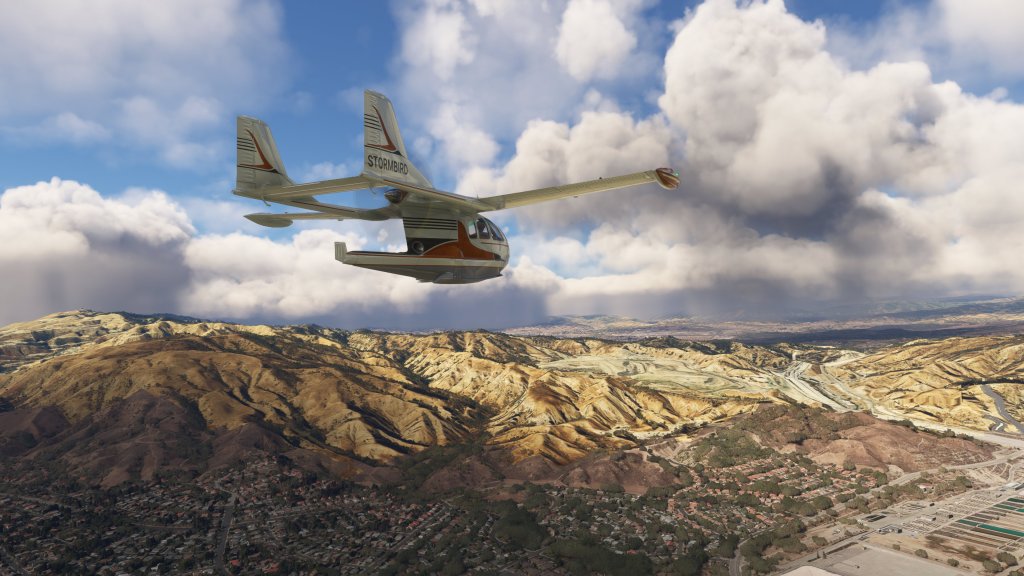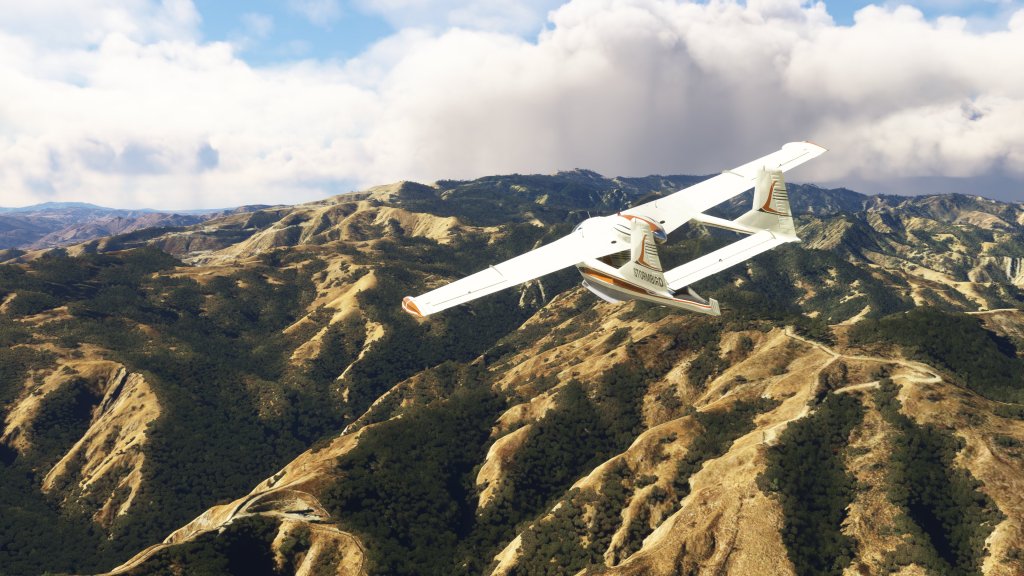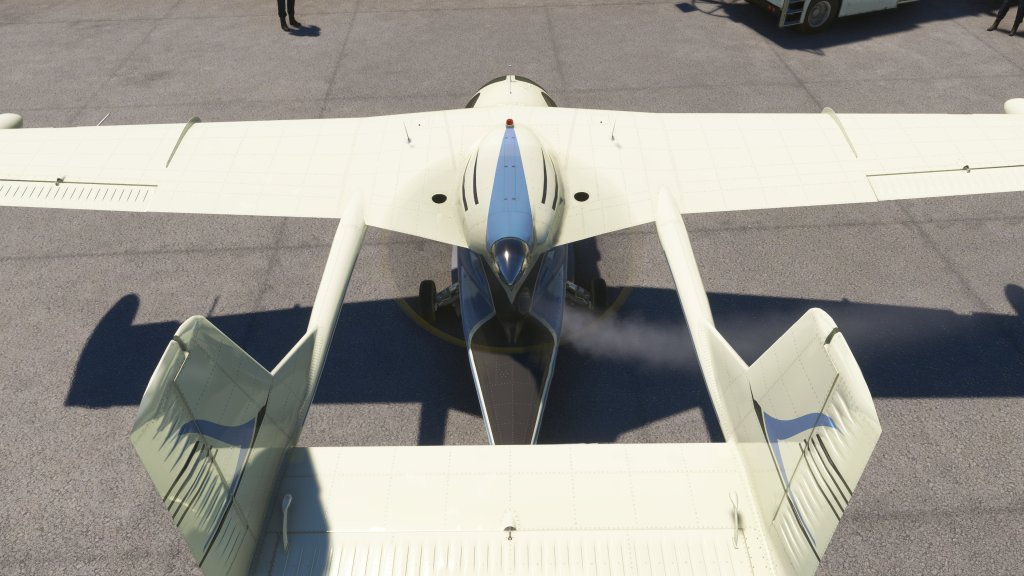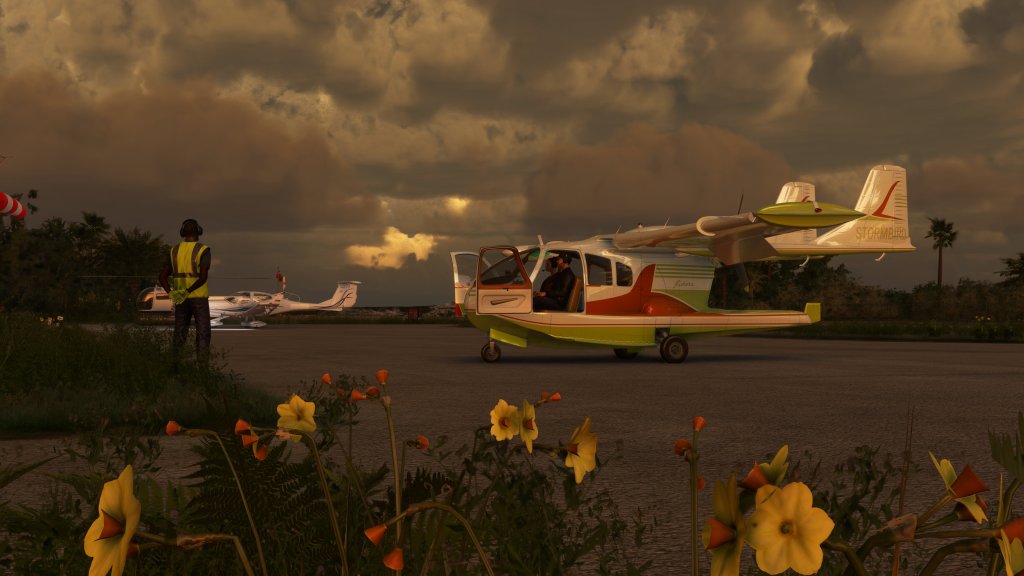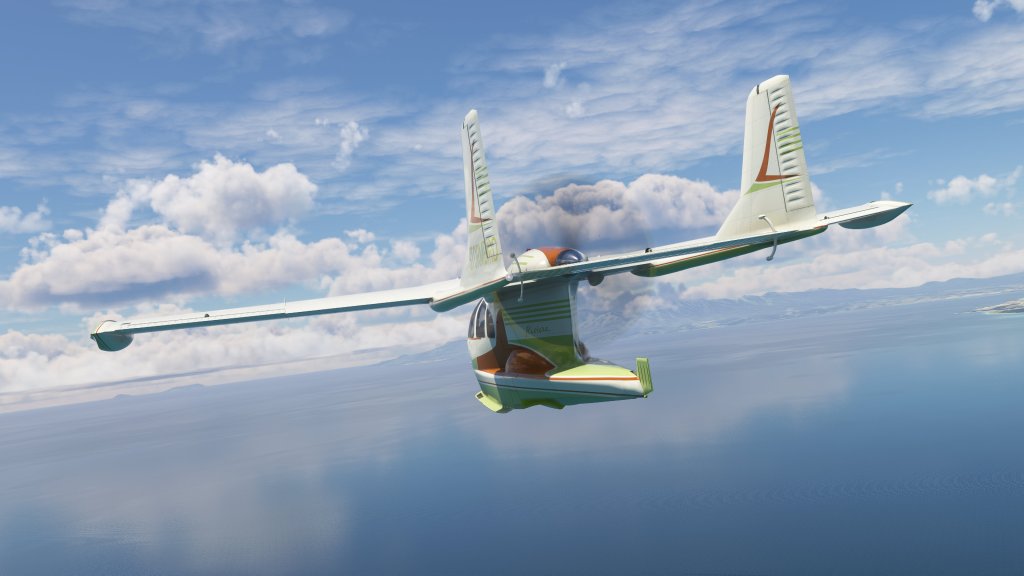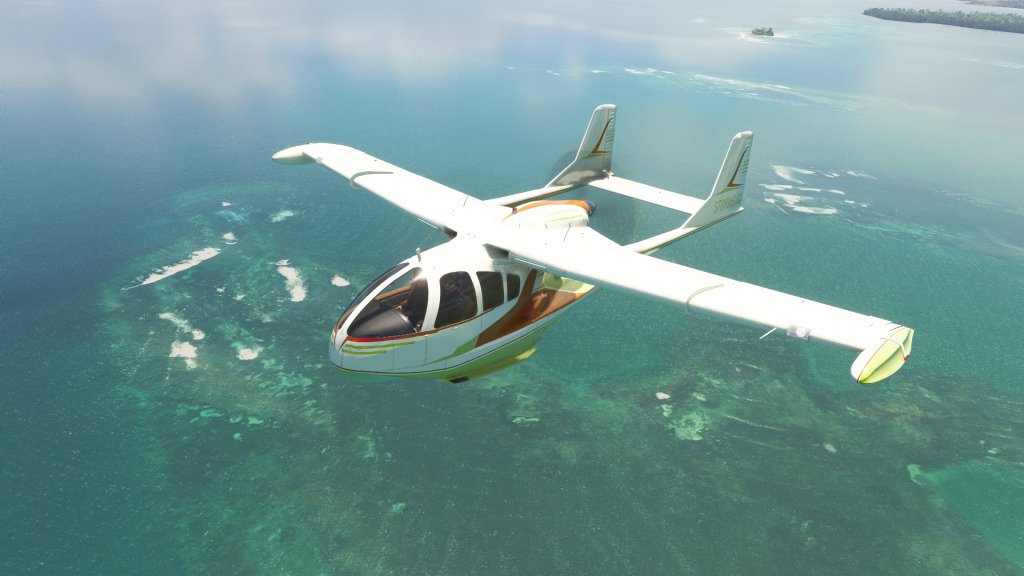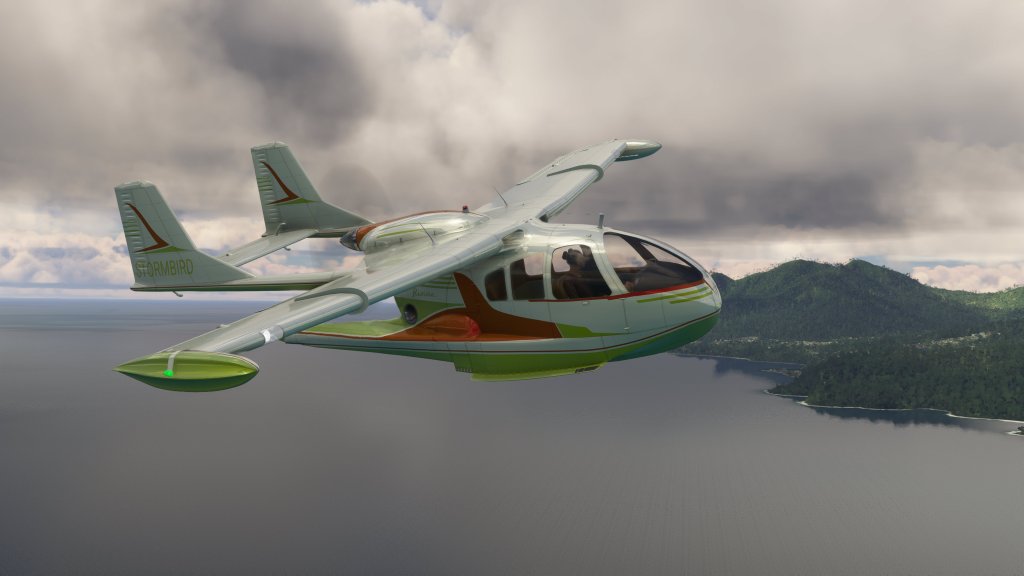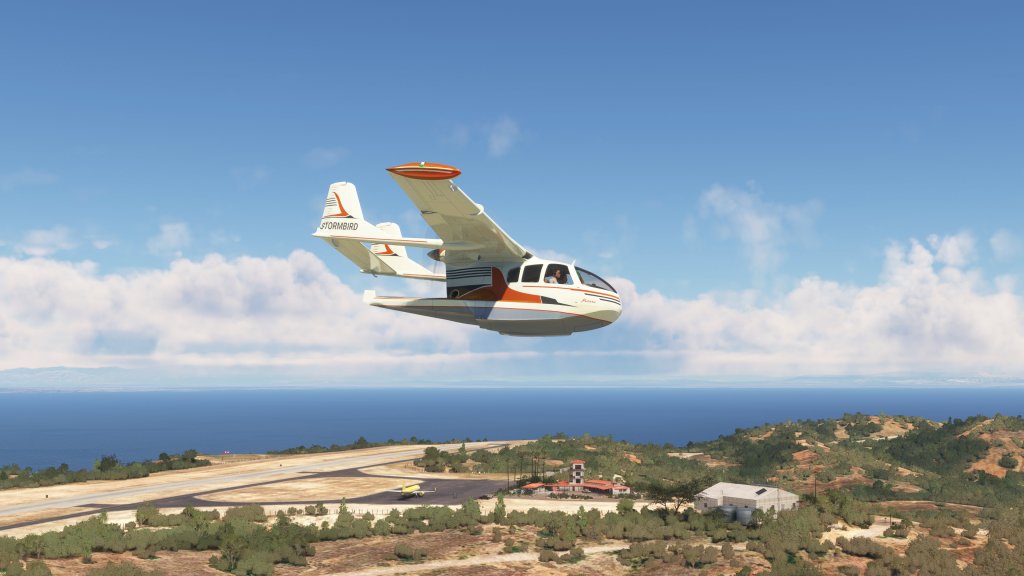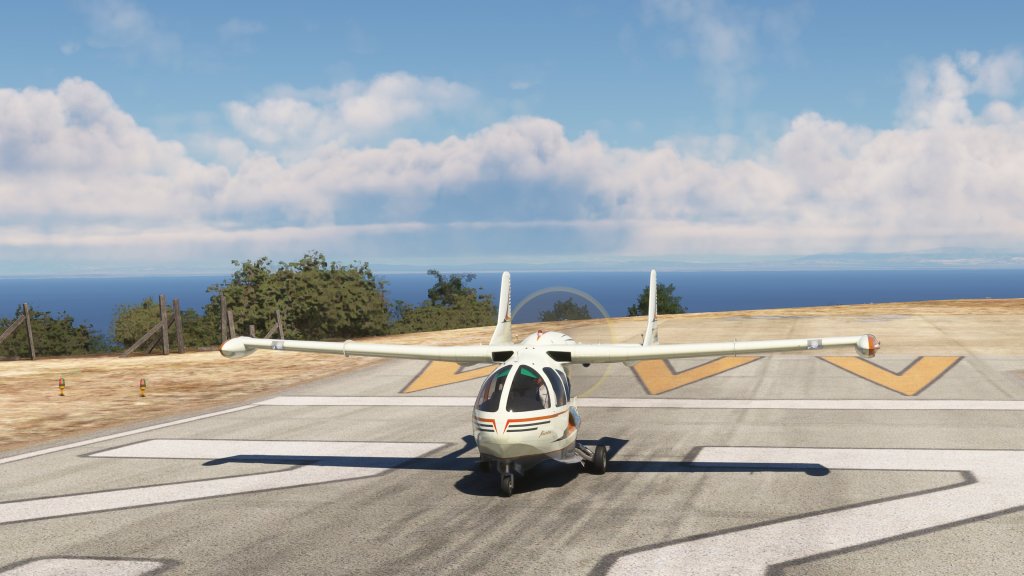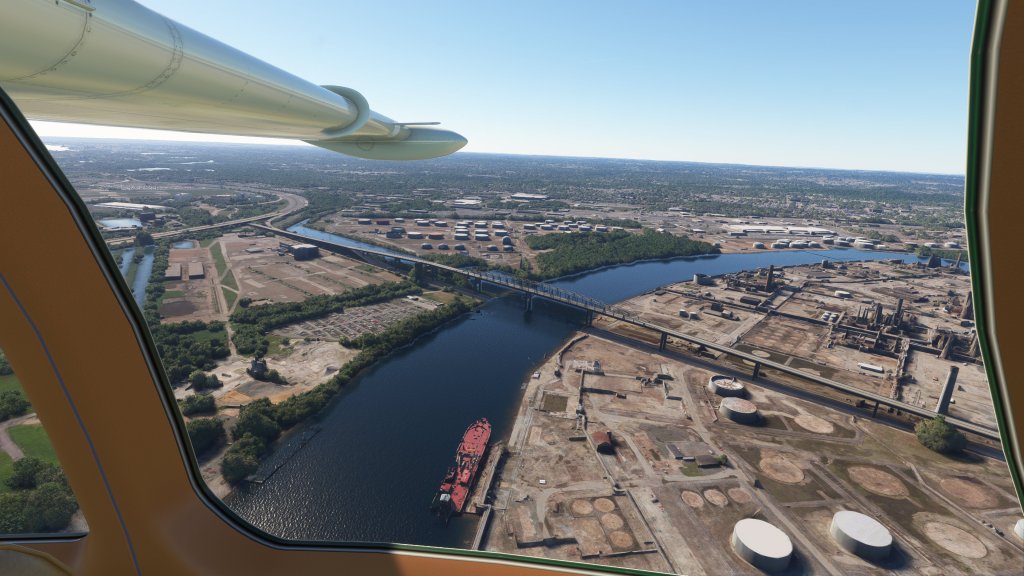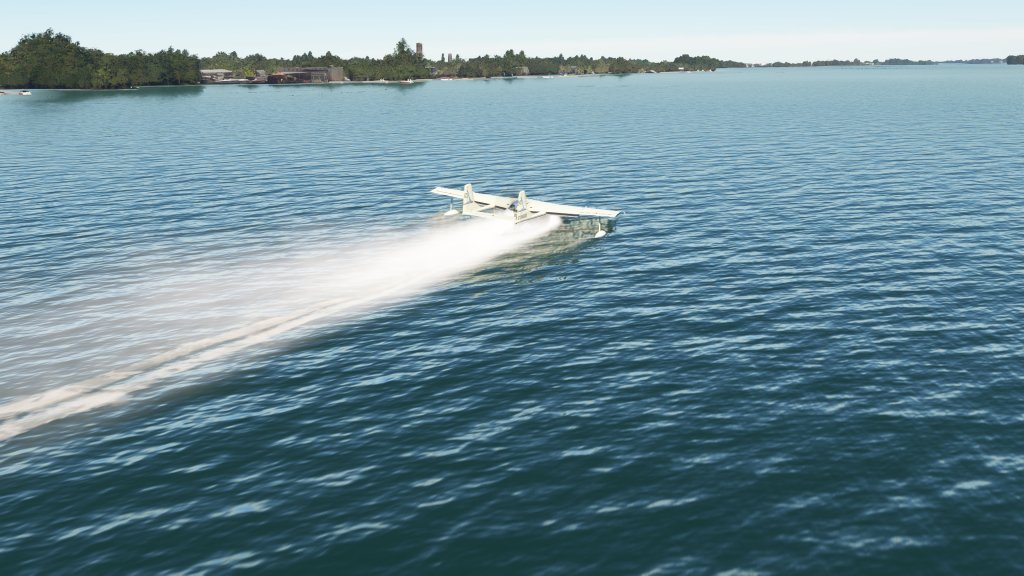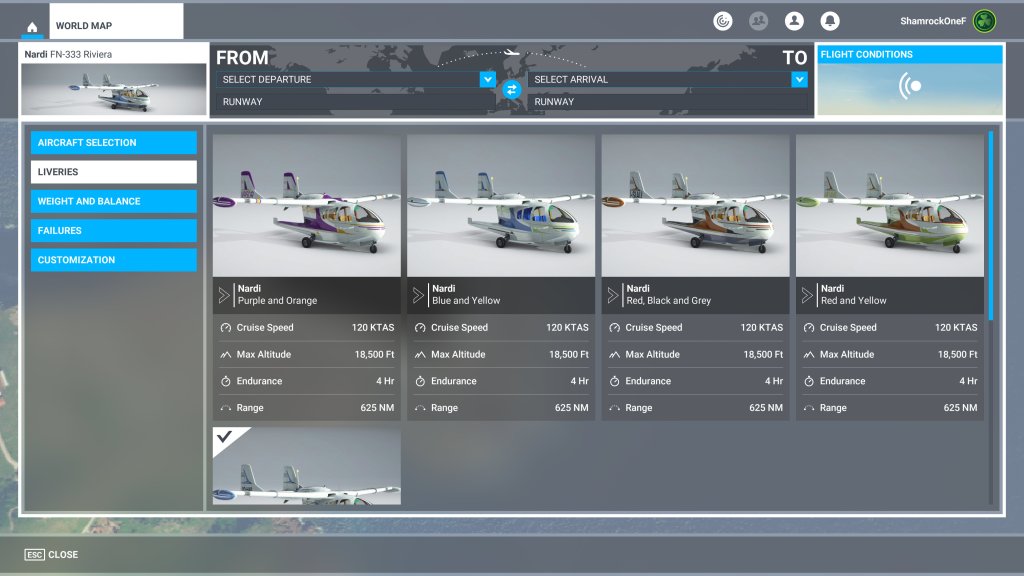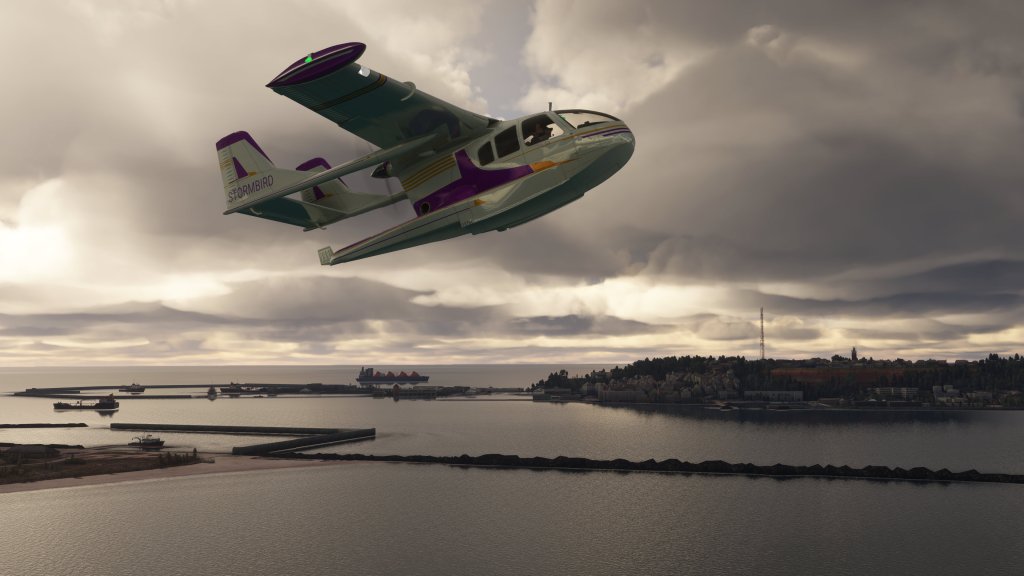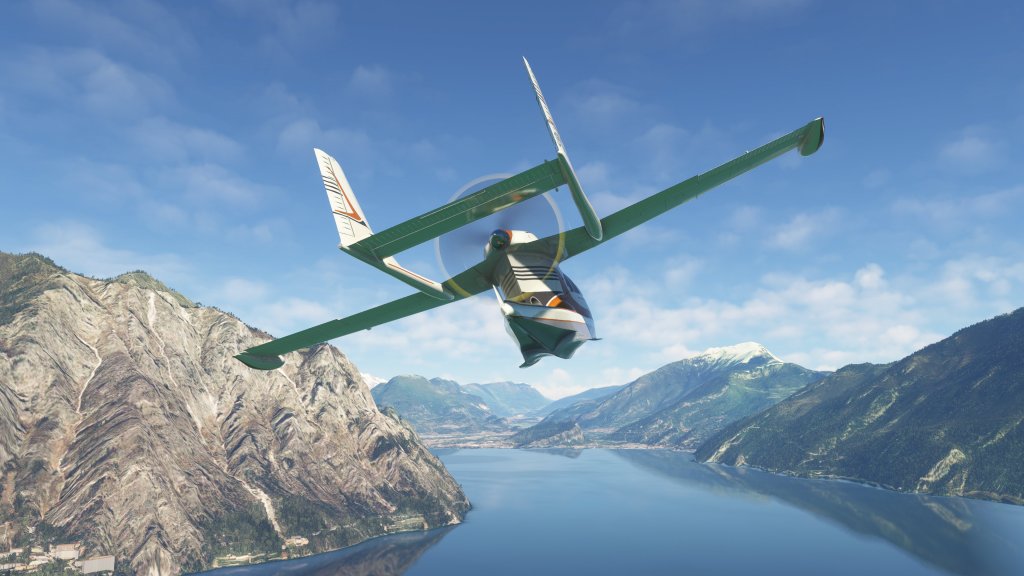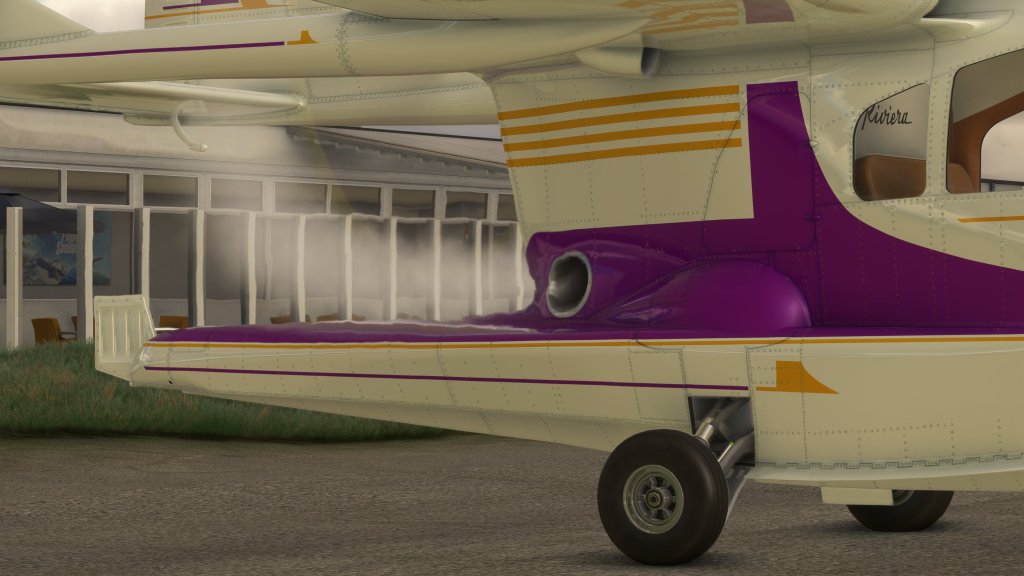Taking a break from high end airliners and scout helicopters to do a review of this gem of a little airplane for Microsoft Flight Simulator. The Nardi FN.333 Riviera by Mario Noriega Designs is a retro-stylish amphibious general aviation aircraft that was released for Microsoft Flight Simulator last year and attracted both my attention and the illicited several comments from readers. I’ve spent a bunch of time flying this aircraft around in some different locations and now that I’ve gotten a handle on it… its time to review the Nardi FN.333 Riviera by Mario Noriega Designs.
A bit of history
Developed by the Nardi Company in Milan, Italy, the Nardi first flew in December of 1952 but financial difficulties saw development stretch out over the course of several years. After the third prototype flew, the company sold the rights to the aircraft to SIAI-Marchetti in 1959.
The aircraft featured a Continental O-470-H engine with 250 horsepower in a pusher propeller configuration at the back of the aircraft. Intakes mounted on the top helped air cool the engine while keeping them up and away from the waterline. Maximum speed was 160 knots at sea level while cruise speed was a respectable 143 knots at 8,000 feet.
Most of the 29 aircraft sold were sold to customers in the United States with a few finding homes in Australia, Norway and Sweden. Only a handful of these aircraft remain in flying status.
The original brochure for the aircraft is available online if you want to have a look at it. A mix of technical information and 1950 and 1960s era marketing and well worth a quick look! http://www.seabee.info/pdf/riviera/FN333_SIAI_Brochure_Web.pdf
Visuals and sounds
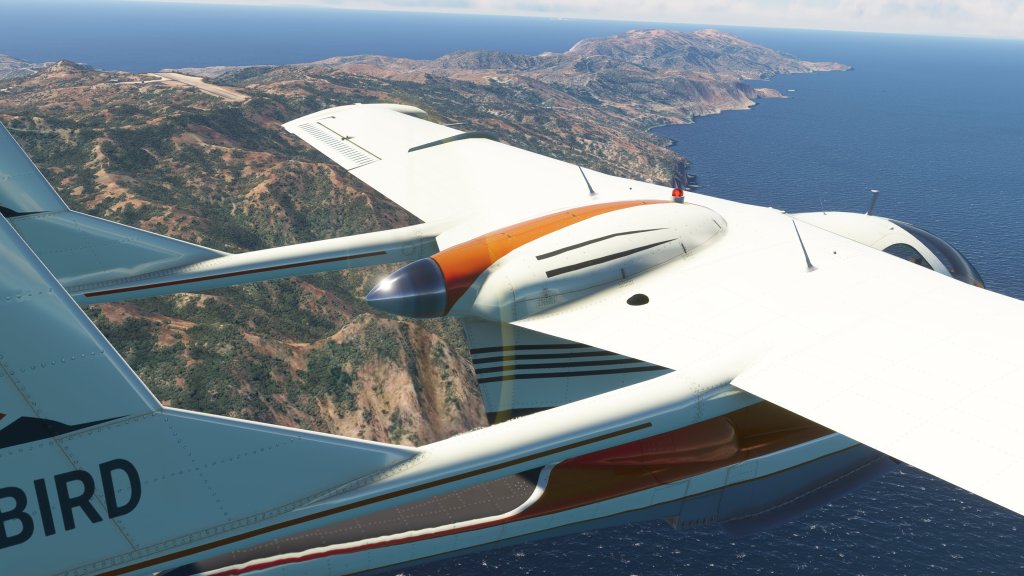
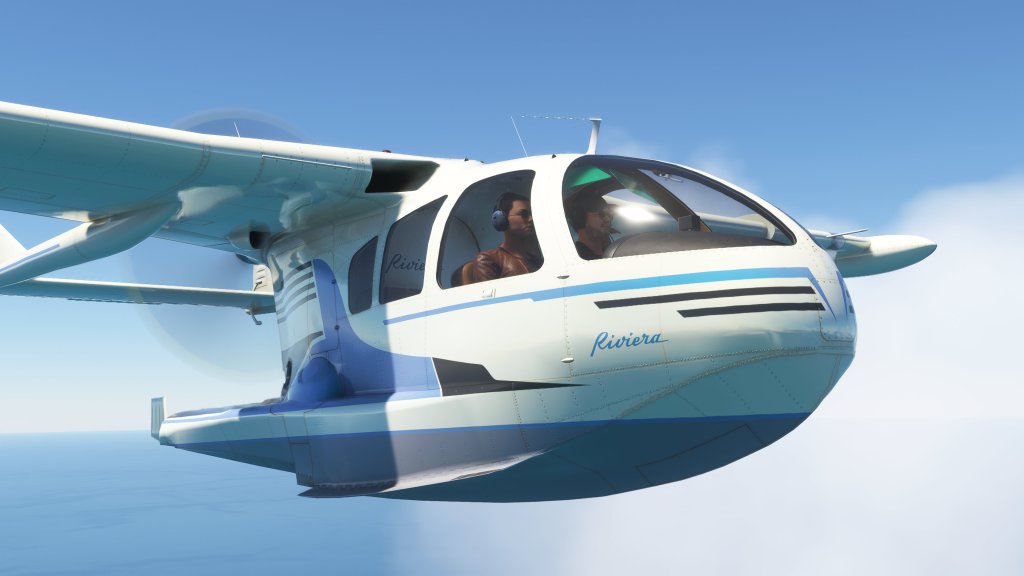
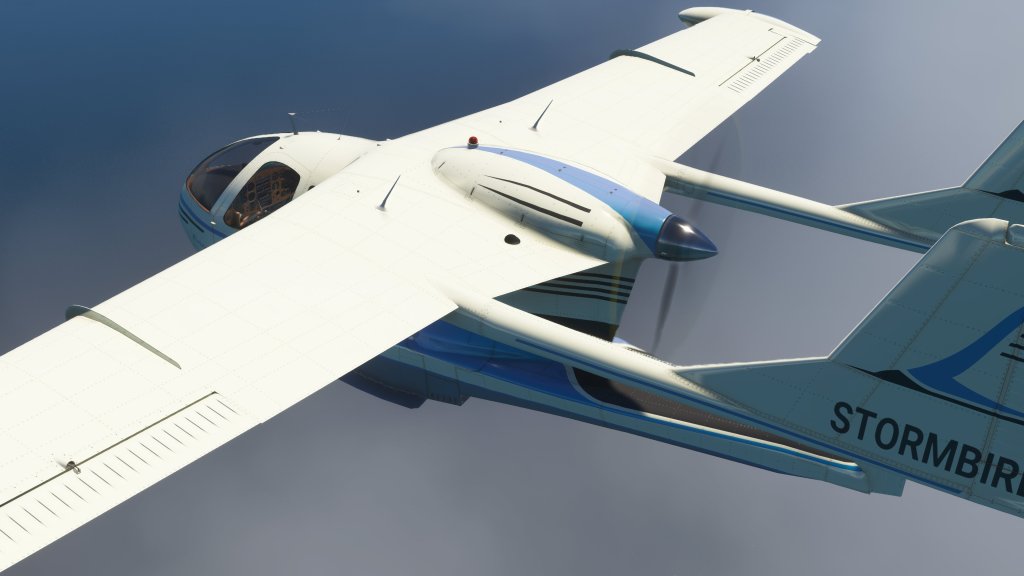
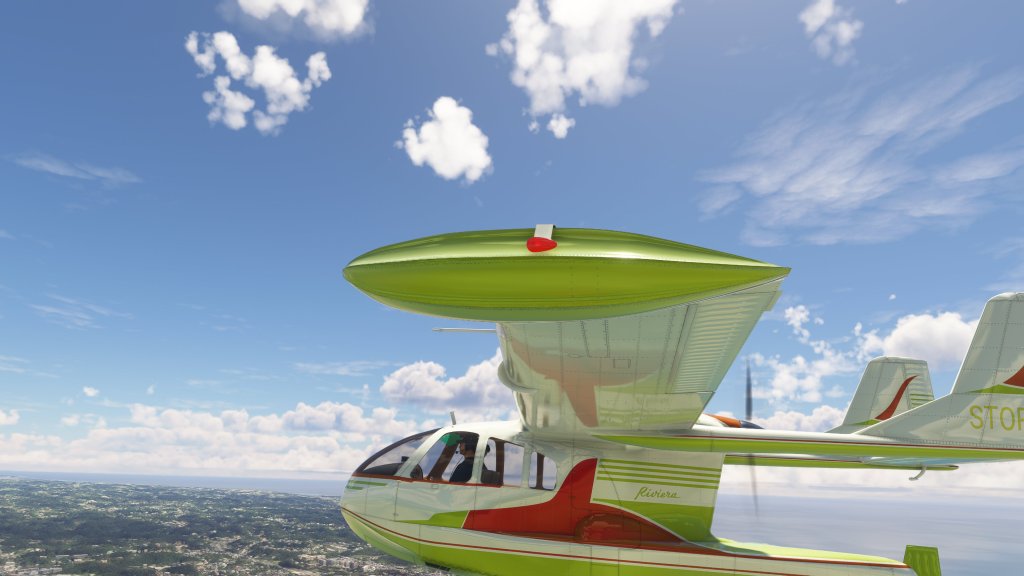
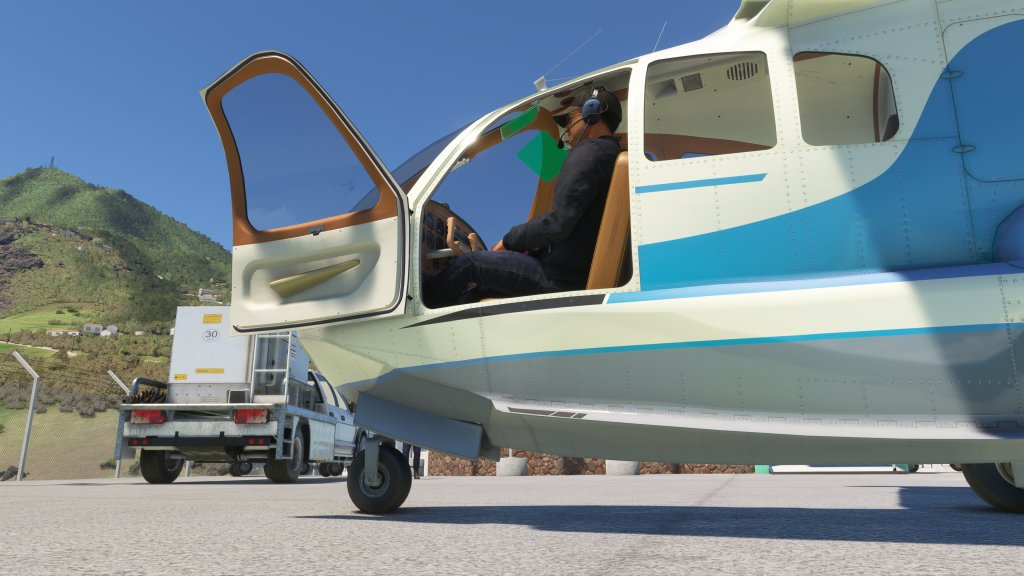
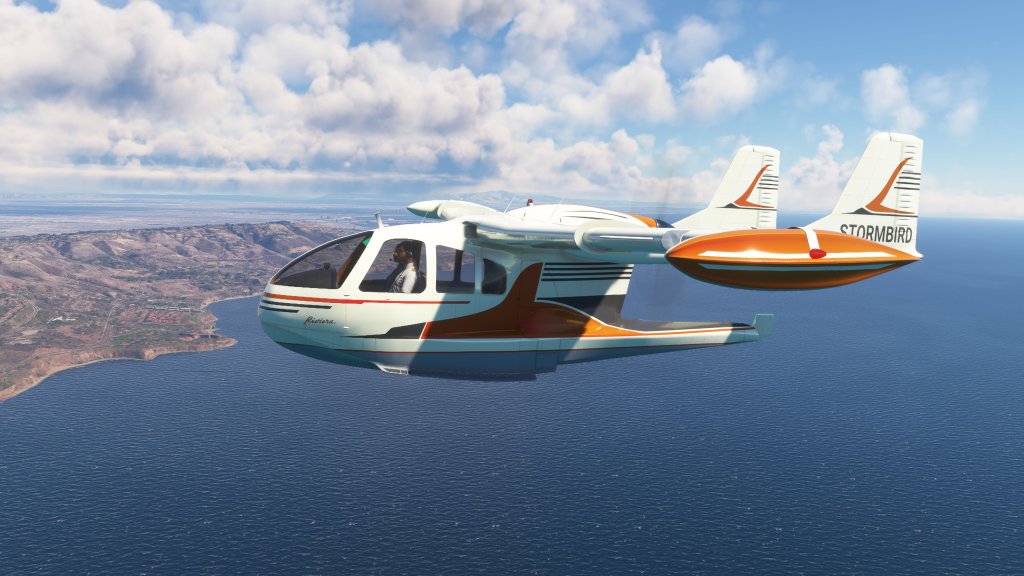
The Nardi FN.333 Riviera is very good in most areas when it comes to visuals and sounds. I start with the exterior where detail levels are generally very good. It makes a great impression with strong modeling and generally good texture work and materials work too. A few texture elements such as the rivets are a bit low on detailing relative to some others that are out there but on the whole it presents well. This aircraft has a fair bit of animation too which includes the float planes that fold out from the wingtips and this is all very well done.
Exterior details extend to things like engine smoke and particle effects for off-road landings as well as water effects. Night lighting is basic but effective as the instruments remain easy to read with their own lighting. It doesn’t have the kind of panache you see with a more premium option but for the price this is pretty good.
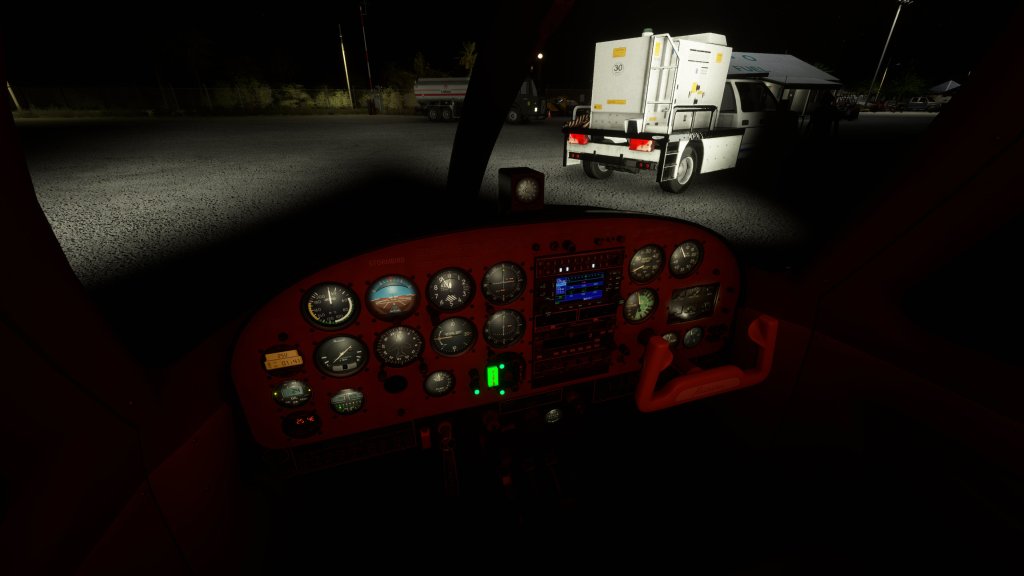
Inside it’s a similar story. The overall impression is very good with a few misses. The front panel is presented in a terrific retro brown. Gauges are mostly clear and easy to read even when zoomed out and the quality is generally good on all but a few. The OAT/VOLTS gauge is noticeably lower detail and looks like it was originally a photo. There are also some rough areas around the cockpit around where the door and cockpit pillar meet where both texturing and modeling are not great. Other areas such as the seats, most of the controls, yokes, and switches are generally good though the seats are very plasticy.
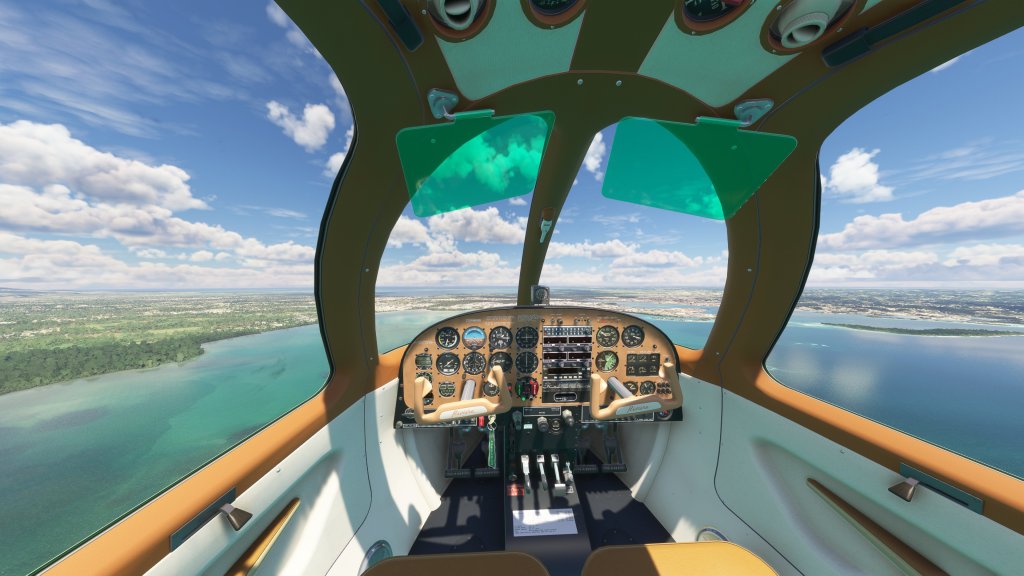
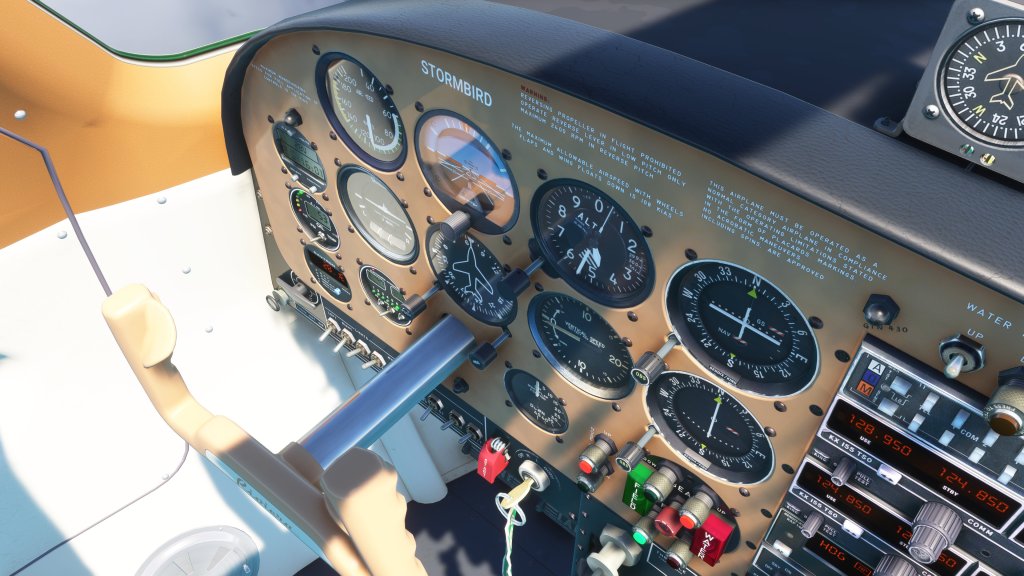
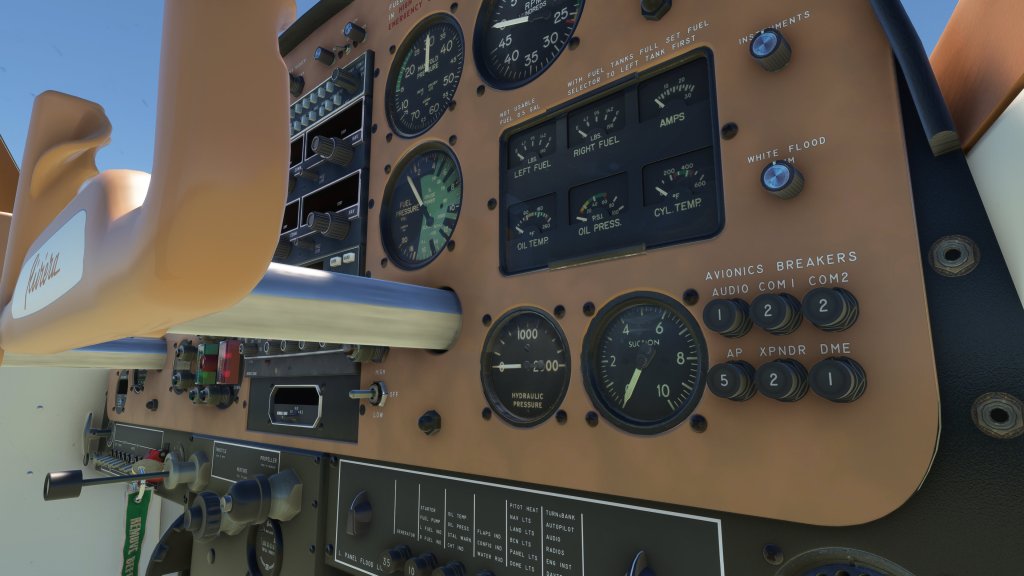
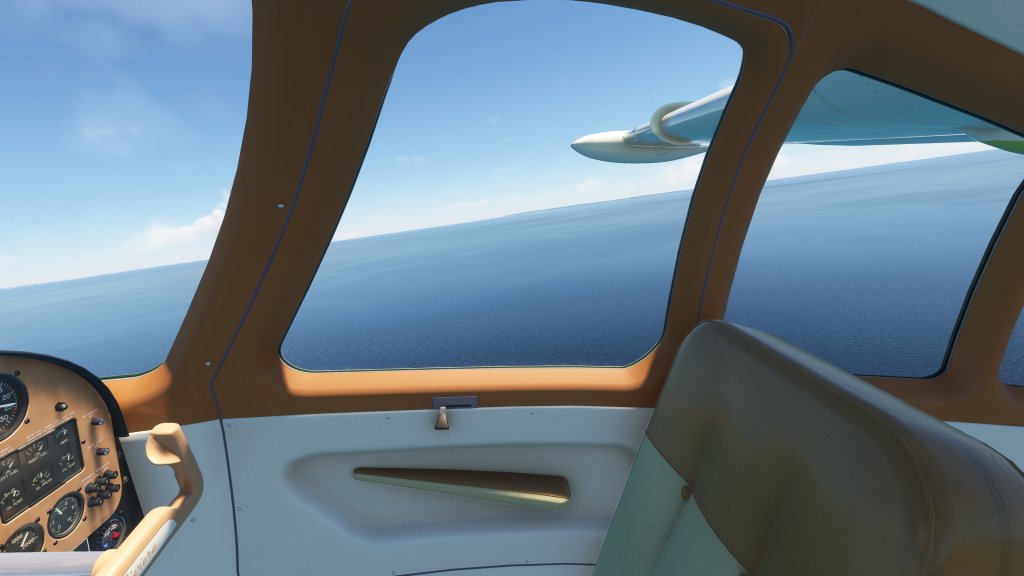
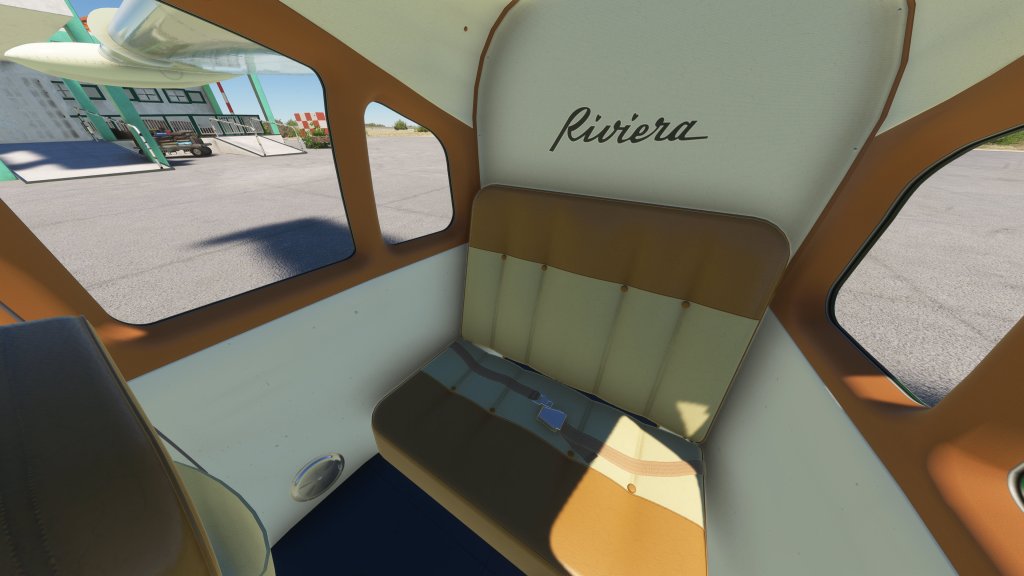
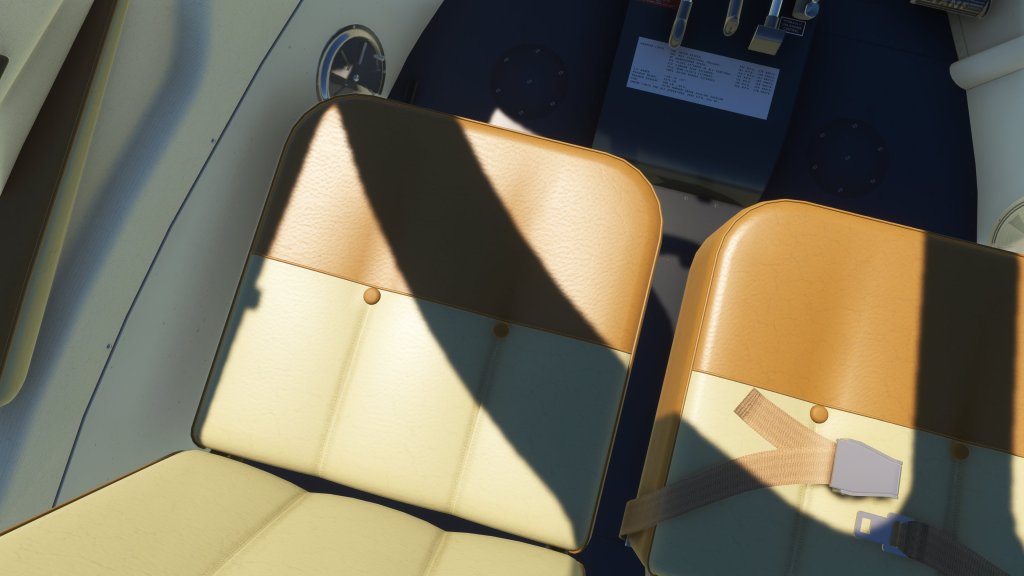
The sounds are generally strong here too. There is admittedly a bit of a drone to the engine quality but not as rough as a few Carenado types that I’ve flown over the years. All of the various controls and switches have appropriate noises associated. When you’re anchored (more on that) and the engines are off, the water sounds against the airframe are very immersive. Relaxing even!
The stall horn warning is a bizarre sounding buzzer thing that is wholly unique. It has an artificial quality to it so I suspect its just a sample… but it does give the aircraft a bit of character too and this one has ample character. There are some audio callouts with a voice over that are hilariously muffled. I don’t know if this was done on purpose or not but they are virtually useless.
Flying it
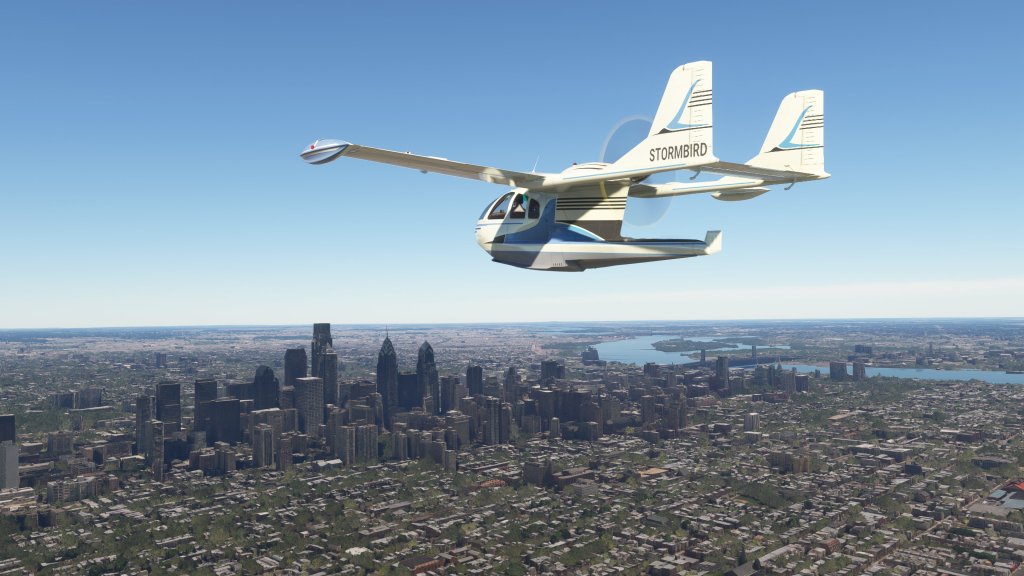
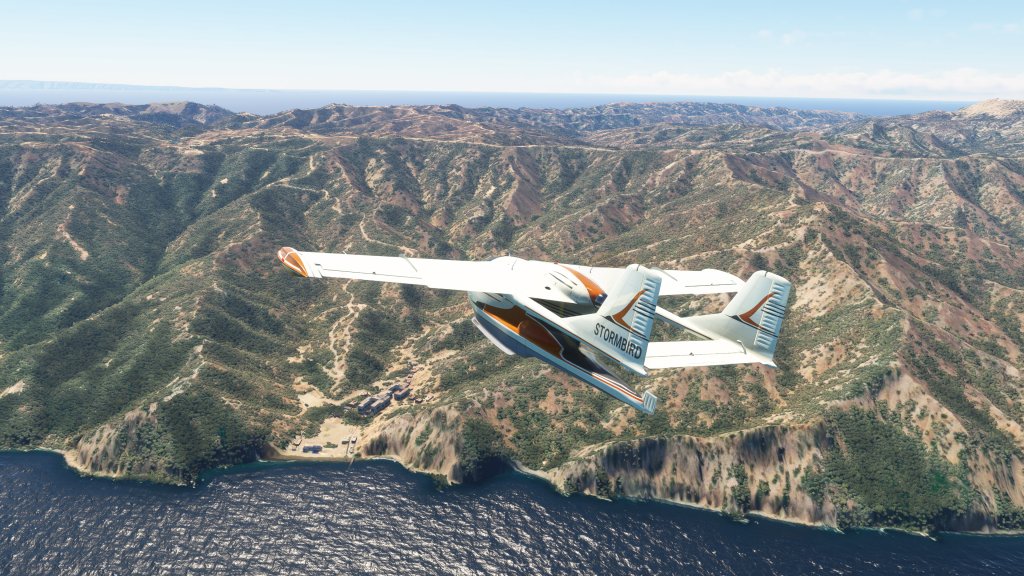
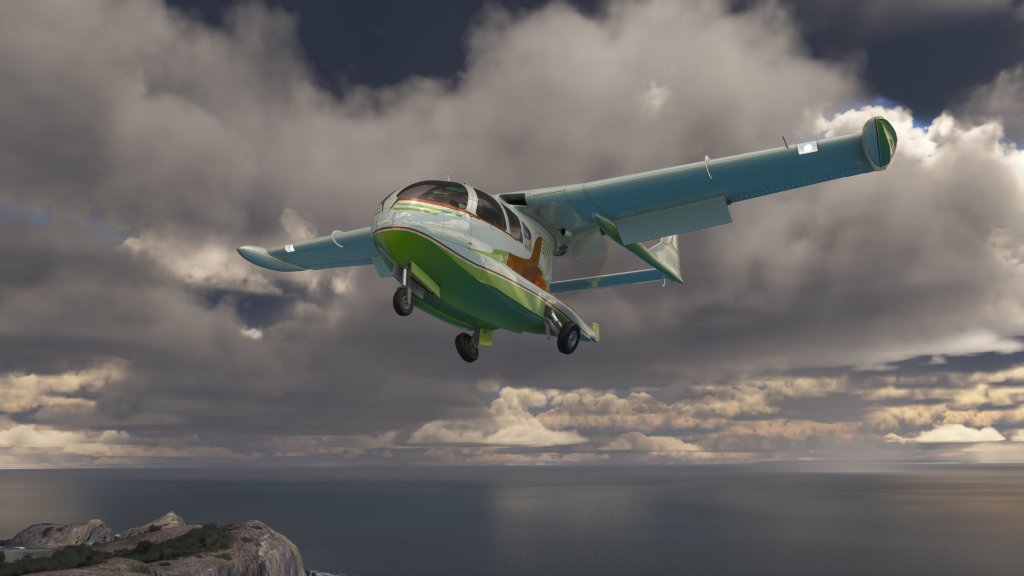
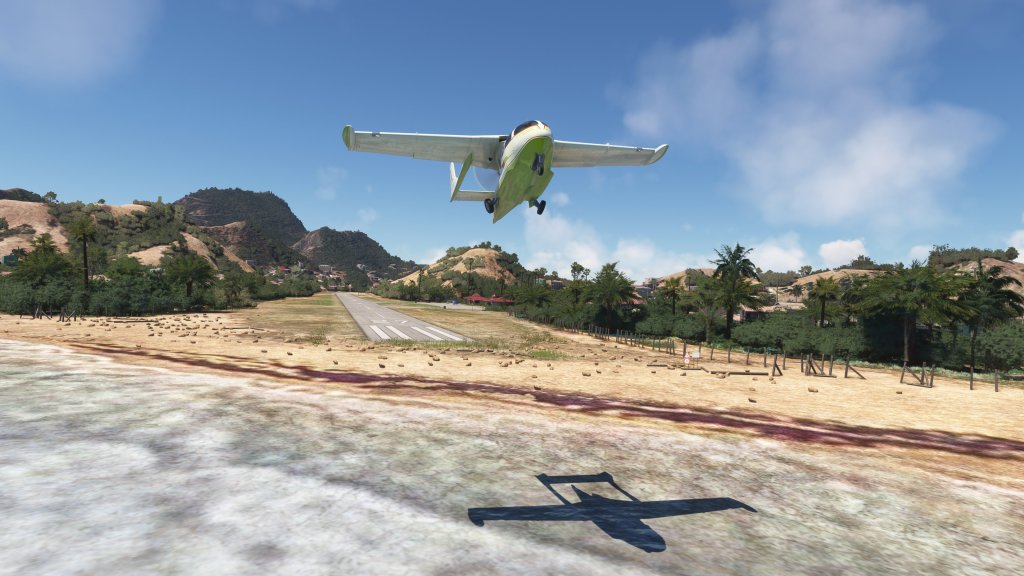
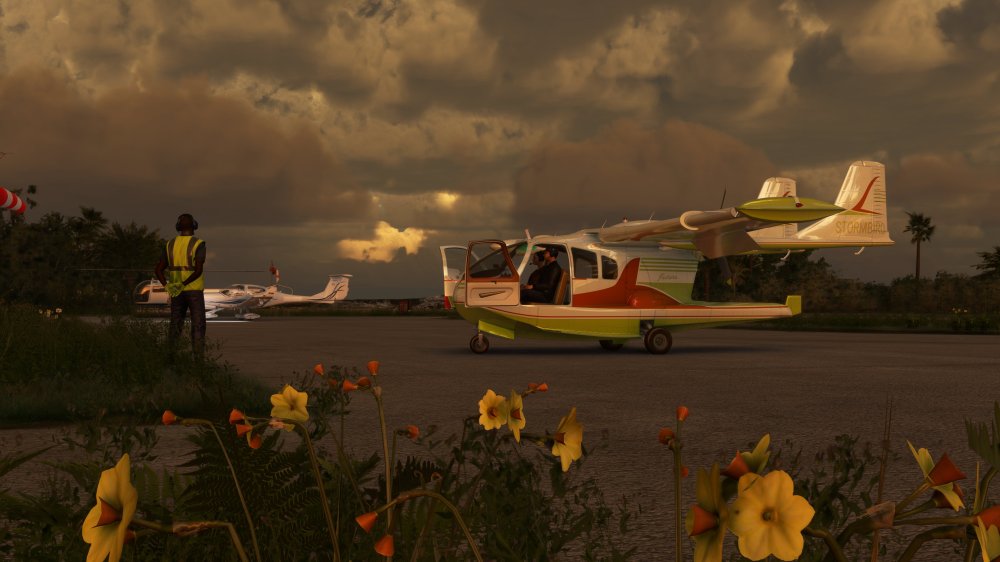
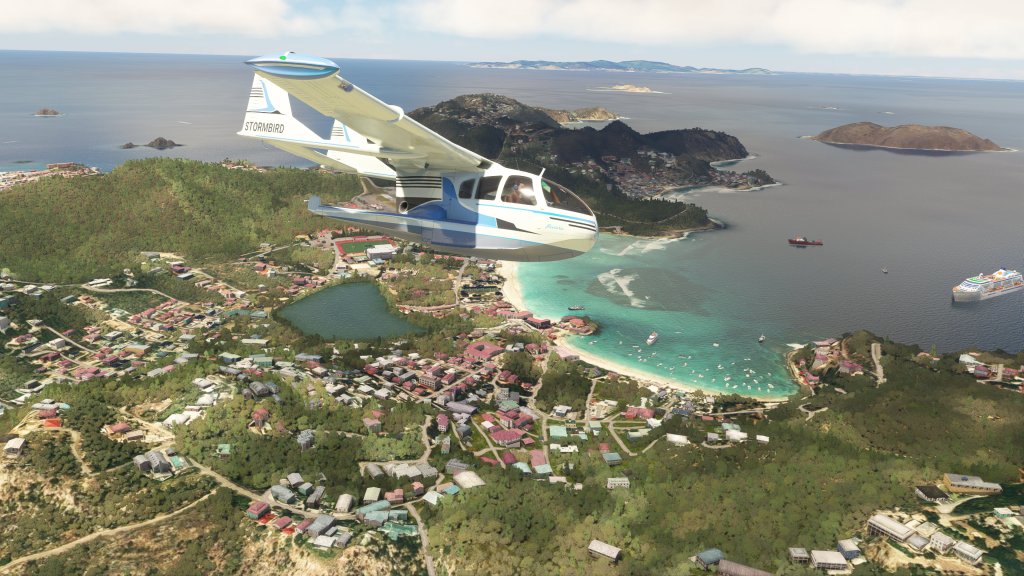
This is a surprisingly well-done flight model with an aircraft that is quite fun to fly. Although the aircraft appears to be difficult if not impossible to stall conventionally, you can cause it to slip into a tumbling stall with some extreme cross-control on the ailerons and rudders. It can bite you, but it doesn’t really want to! Most of the time the stall horn comes on, the aircraft shudders just a bit and then gradually loses altitude.
The FN.333 is short in length and doesn’t have a lot of lateral stability so it likes to nose around a bit and really benefits from good stick and rudder technique. I have no idea if the author made use of the CFT tools in MSFS to develop the flight model, but it is one of the livelier aircraft in the sim. Is it X-Plane lively? No… not there, but far better than the average and extremely enjoyable.
Ground handling on the other hand is definitely on the average side. Its very much like most tricycle gear GA aircraft in the sim though the nose wheel doesn’t move a lot with only a 20-degree left or right movement. As a result, the FN.333 can swing a bit too wide in tighter spaces. It doesn’t like to ride on the brakes either and tends to go from rolling to stop with light taps on the brakes. It does rock back and forth on its wheels which is a really nice touch as that’s not yet a default behaviour.
Water landings and takeoffs are generally the same as other MSFS aircraft. It’s not great, its not terrible, but somewhere in the middle. Despite that, it is terrific fun to be able to spawn at any airport, takeoff, land on the water, takeoff again, and go back and land on the ground again. Very versatile and unique some amphibious types where the floats cause significant ground handling and aerodynamic penalties, these are conformal with the wing, so you never really notice it.
Systems, features and bugs
For an old GA airplane, the FN.333 was surprisingly well equipped and that translates through to the sim. To start, you have a conventional six pack of instruments which, if you’re familiar with the typical old school Cessna setup, you’ll generally find everything in roughly same place here. The conventional setup includes a pair of standard radio units through you can toggle switch in the cockpit to change one of them out for a GTN 430 GPS for some added navigational capabilities. It’s not been upgraded to the WorkingTitle GTN 430 so its not quite as complete or useful as the upgraded model. But it does do the basics.
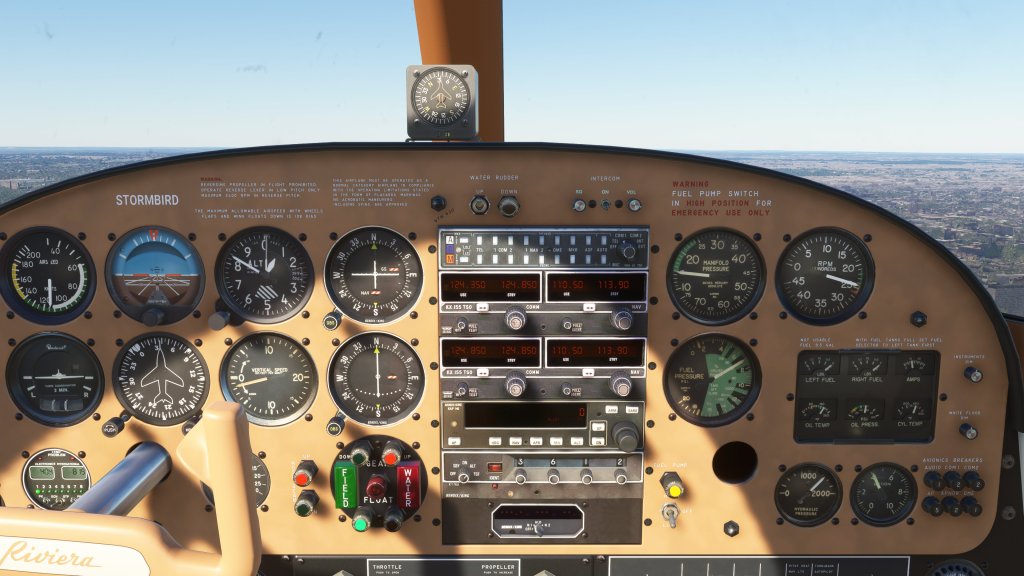
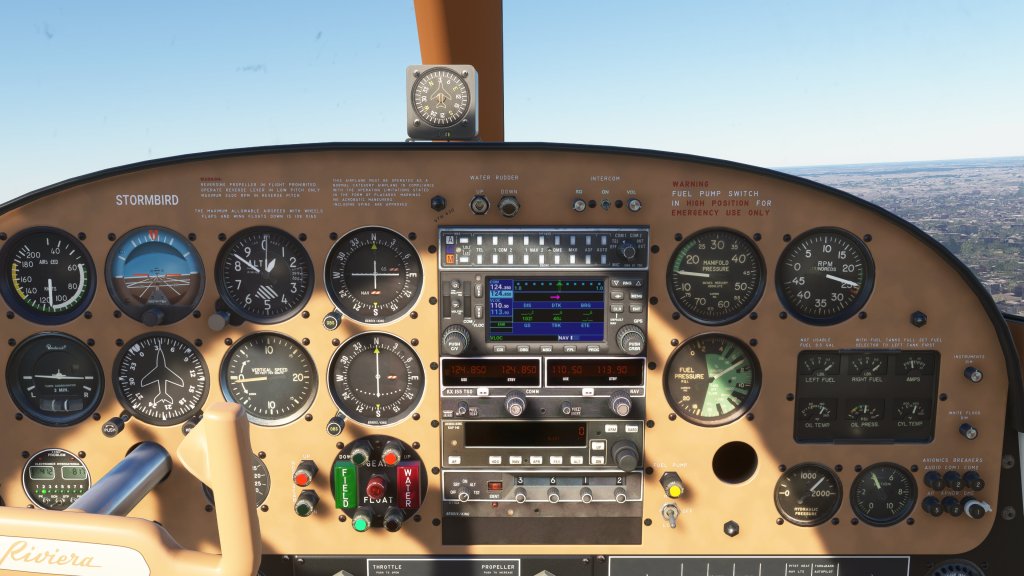
The aircraft has a standard autopilot with altitude hold, heading hold, vertical speed, and other settings that makes this into a great little touring airplane. That instantly boosts the value here as longer flights are quite easy to do.
When landing on ground, you have conventional retractable landing gear while water landings are done with deployable pontoons that are swept up into the wingtips when not deployed. The aircraft has a reverser for getting out of tight spaces and it has a water rudder although I found it of limited use. It works but it can be difficult to point the nose.
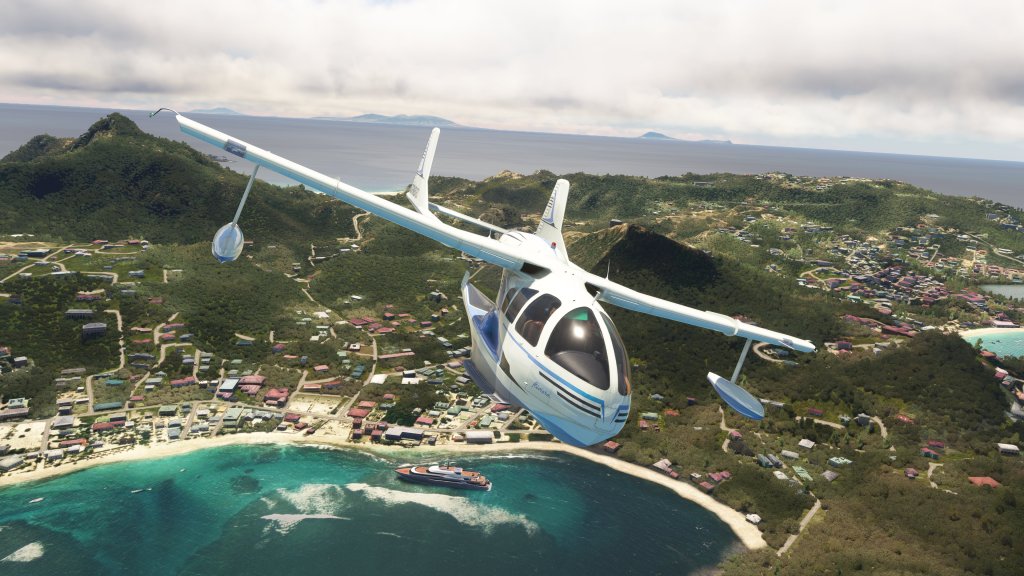
There’s also an anchor which you can click and toss overboard when on the water. This immediately stops the aircraft, which is a bit jarring, but otherwise useful in keeping the aircraft from drifting on the water. I just sat and let it bounce up and down in the waves for a bit and found that to be pretty enjoyable.
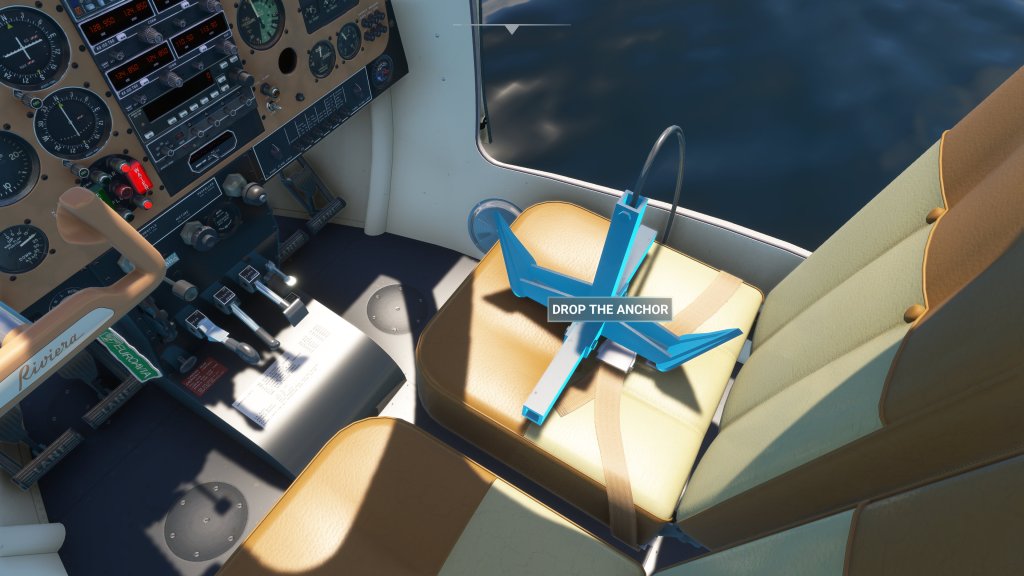
The aircraft has various particle effects attached to it including engine start smoke, water particle effects for wake trail and spray, and even some dirt strip effects when going off runway.
I did have a weird bug where every time I went from exterior to interior the co-pilots yoke would disappear and require a few clicks to get it back. On the same flight, my exterior camera views stopped working. I couldn’t confirm if it was a MSFS glitch or something with the FN.333. I also have noted that when the aircraft spawns in the water, the landing gear is often deployed and the pontoons are up in the wings. Setting these correctly before takeoff is essential.
The FN.333 does feature a working electrical system with clickable breakers that are functional. Nice to see! There is no engine damage system here so you can run at maximum power indefinitely if you want.
Final thoughts
The theme throughout this review is that I was surprised about most things that this aircraft has to offer. There are a few rough patches but nothing that didn’t stop me from enjoying this aircraft thoroughly. Contrasting to some of the larger operations out there, Mario Noriega Designs is a solo operation so the overall quality of the presentation should be considered impressive on the whole. It does have a few rough edges but nothing that takes away from the charm of this little airplane.
Good visuals through most of the aircraft, mostly sounds with a couple of misses, a working electrical system, and a good variety of aircraft systems appropriate to the era of the airplane paired together with an aircraft that is simply a joy to fly. This aircraft makes a great little sightseeing tourer with a good autopilot and the ability to land and takeoff just about anywhere there is an airport or water. I even landed it and took off from Saba and Saint Barthélemy Airport and managed to do so without too much difficulty.
The FN.333 is also offered at a reasonably low price coming in at £9.99 GBP on the iniBuilds store or from SimMarket for €11.49. I picked it up on sale for even less so this one is a bargain at any price.
I wouldn’t put this aircraft up in the same tier as some of the higher end products around but for the price, the features, and the general love that Mario Noriega Designs put into this plane, I think it’s worth a look!
Screenshot

